V/Q Mismatch and Respiratory Mechanisms
1/44
There's no tags or description
Looks like no tags are added yet.
Name | Mastery | Learn | Test | Matching | Spaced |
|---|
No study sessions yet.
45 Terms
gas exchange
-O2 and CO2 transfer at the level of an alveolus
-operation of the lungs as a whole
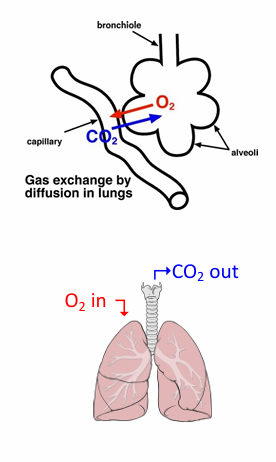
if gas exchange was perfect
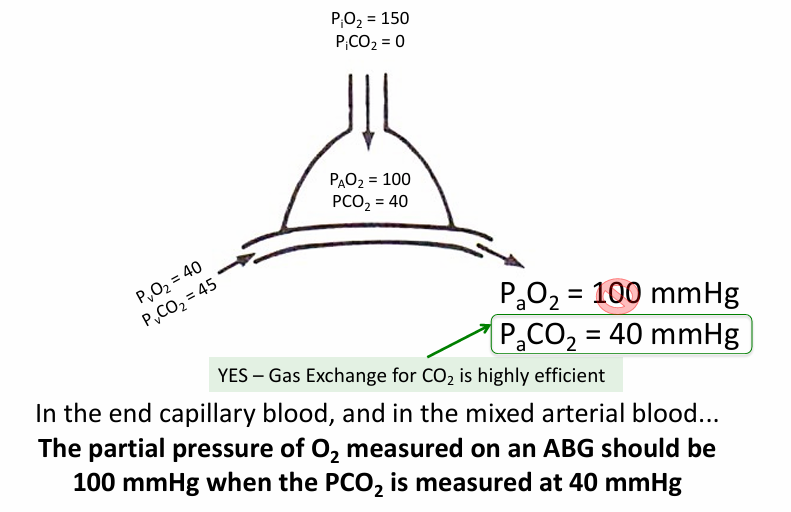
PAO2 in alveoli v PaO2 in blood
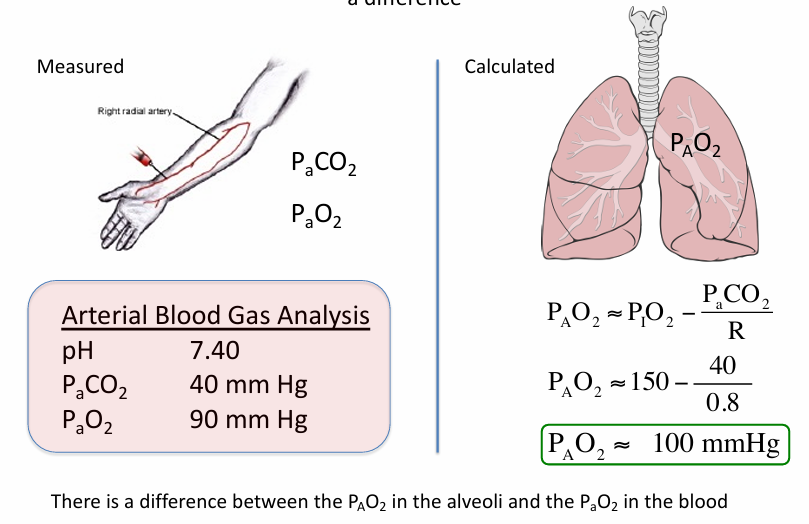
A-a gradient (A-a DO2)
-normal A-a DO2 increases with age
-age/4+4 is a general approximation
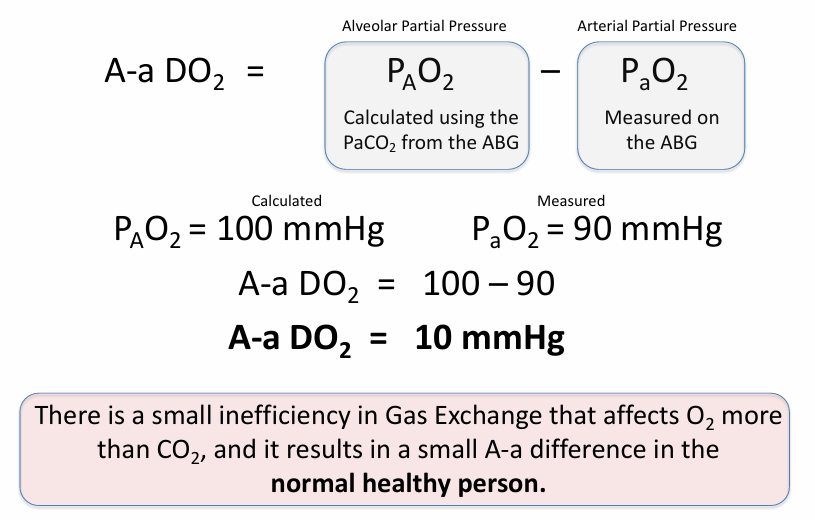
ratio of ventilation to perfusion
-key to gas exchange
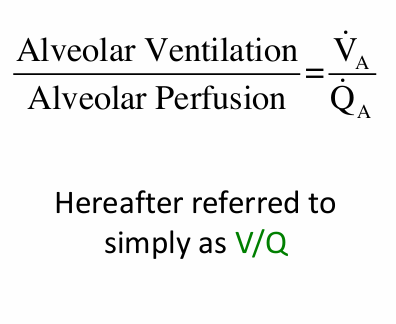
V/Q relationships
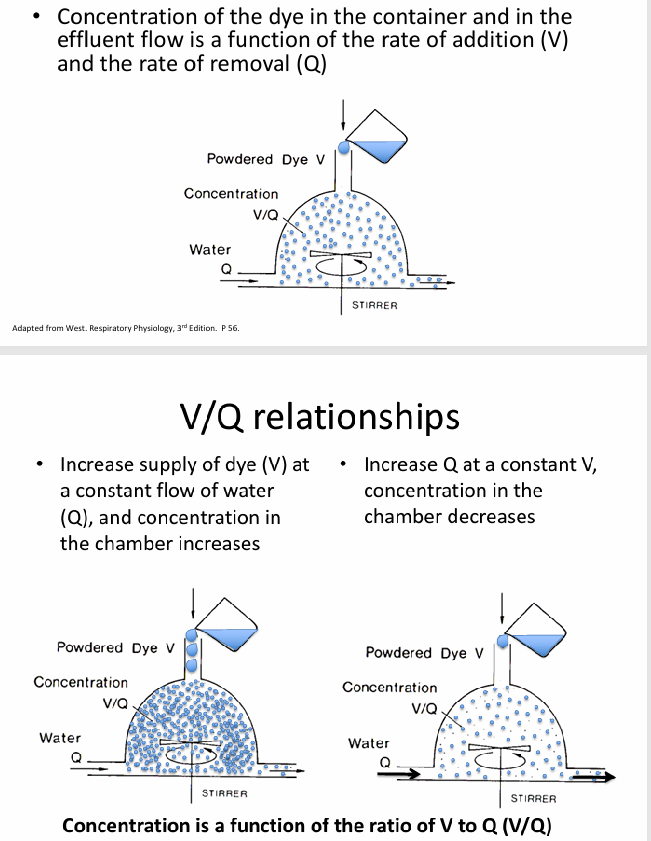
V/Q relationships- ventilation, capillary blood flow
-ventilation of atmospheric O2 is source of O2 in alveolus (V)
-capillary blood flow carries O2 away (Q)
-concentration of O2 in the alveolus (PAO2) is a function of V/Q ratio
V/Q in healthy lungs
-most alveoli have a V/Q relationship that is at or near 1
-ventilation and perfusion are relatively evenly matched in the majority of alveoli
-some alveoli have low V/Q (<1)
-some alveoli have high V/Q (>1)
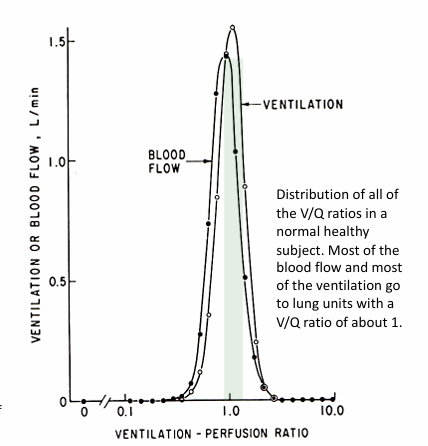
normal V/Q differences in the upright lung
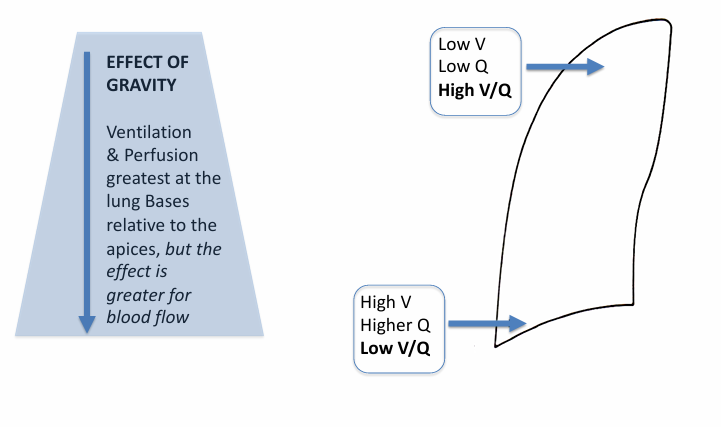
regional gas exchange in the lung
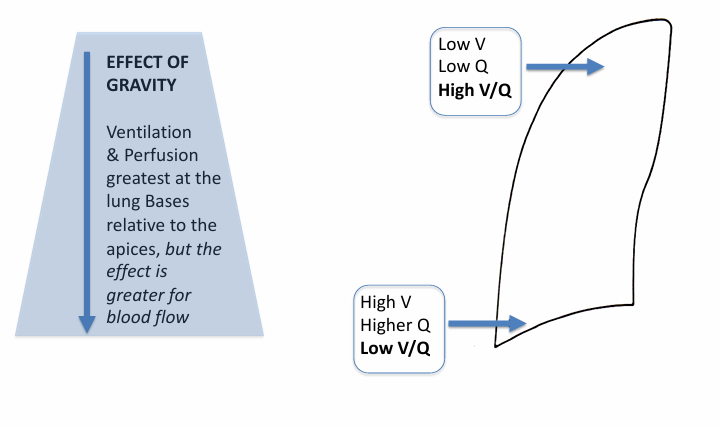
range of V/Q lung units in normal lung
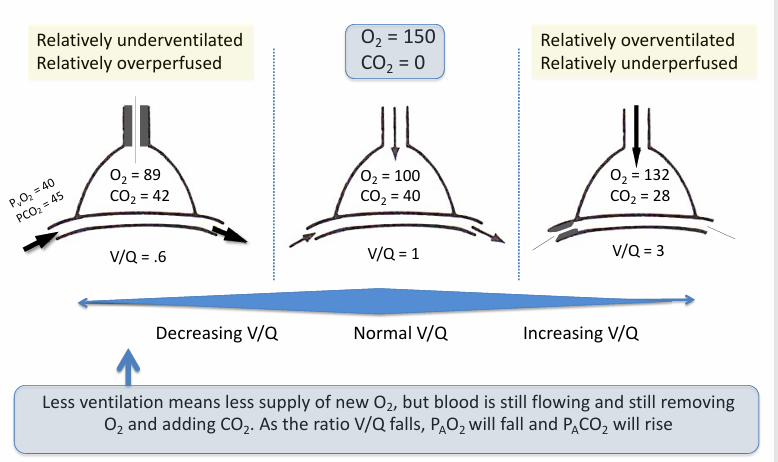
alveolar O2 and PCO2 relationship in normal lungs
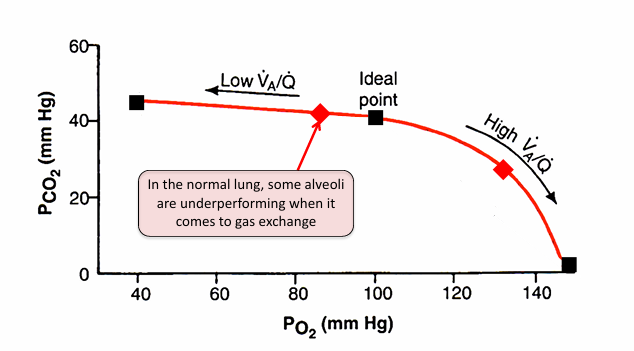
range of V/Q lung units in normal lung- lower v higher O2 content
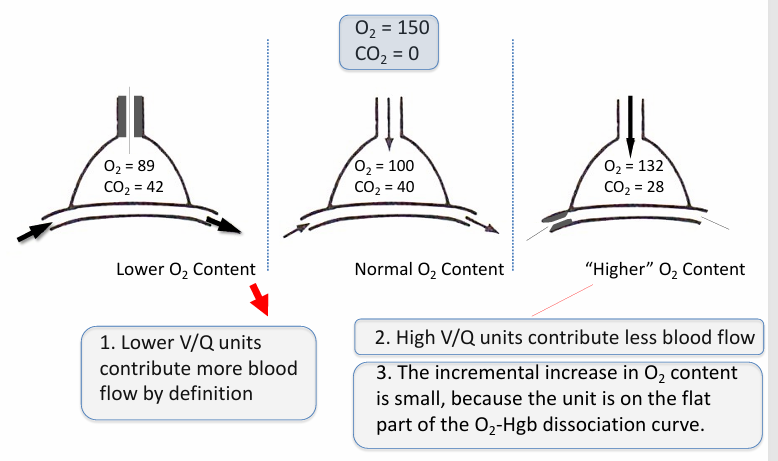
higher V/Q units
-can’t boost O2 content by very much
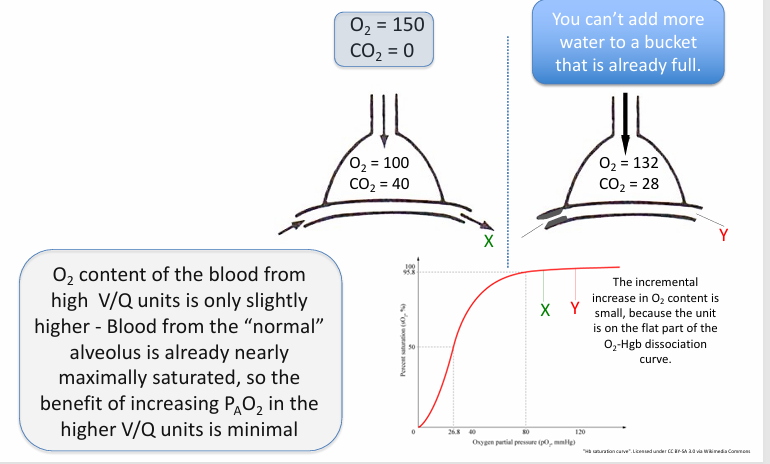
in normal, healthy lungs, heterogeneity in V/Q matching…
-drives down the arterial PaO2
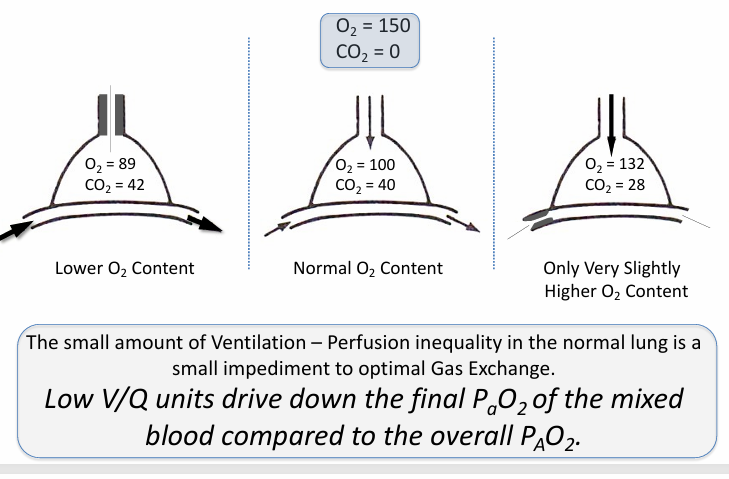
V/Q heterogeneity and PCO2 in the normal lung
-matters less
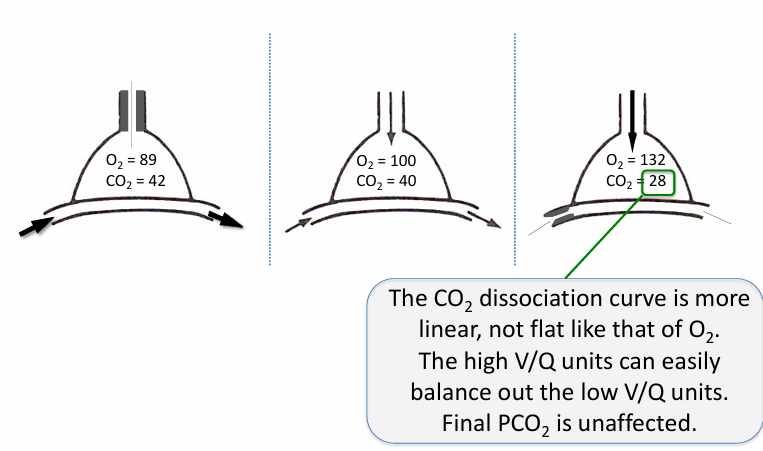
other reasons why A-aDO2 ~10 in a normal healthy adult (breathing room air)
-diffusion of O2 into the capillary falls short of 100% equilibration at the end of the capillary-alveolar interface
-there is a small amount of physiologic shunt: bronchial arteries draining into pulmonary veins, thebesian veins drain into the LV (deoxygenated blood mixed back into the oxygenated blood pool)
terms- V/Q matching, A-a gradient, V/Q mismatch
-V/Q matching: lungs achieve efficient gas exchange by tightly matching ventilation (V) and perfusion (Q)
-A-a gradient: normal lungs have a small A-a difference
-V/Q mismatch: many diseases of the lungs negatively affect ventilation or perfusion (or both) and therefore affect the lungs ability to match V and Q, thereby negatively impacting gas exchange
-diseases that cause V/Q mismatch will result in hypoxemia, and this will be reflected in a measured increase in the A-a gradient
-diseases that negatively effect gas exchange in other ways can cause an increase in the A-a gradient (multiple causes)
A-a gradient in disease
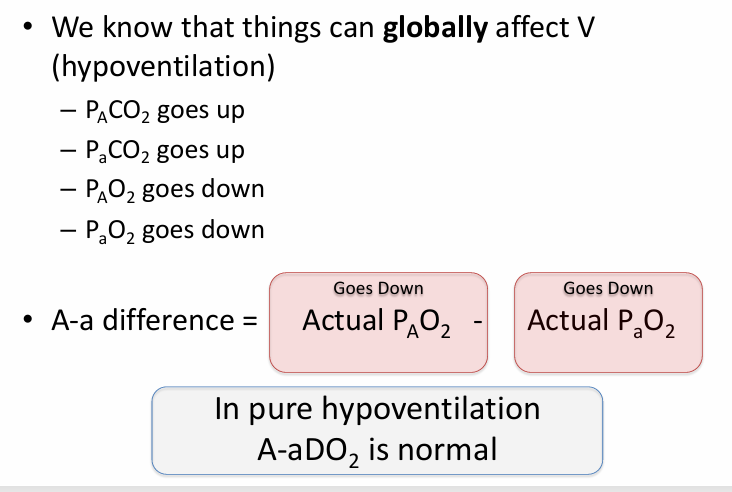
A-a gradient in disease- focal effect
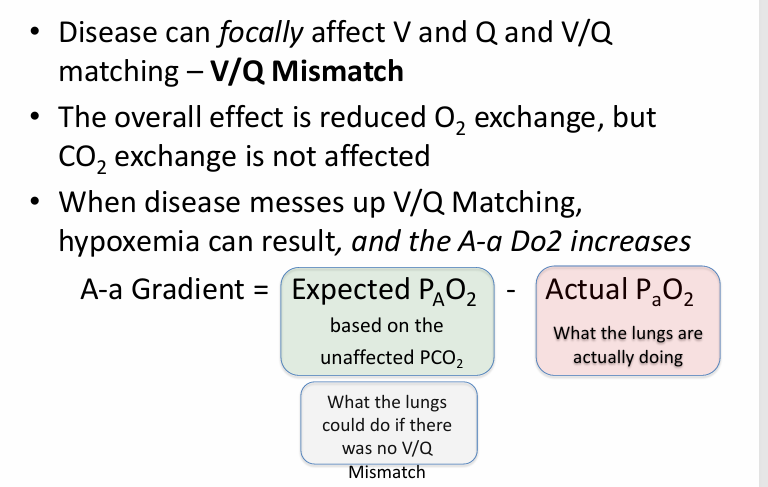
V/Q mismatch causes
-an A-a gradient
-V/Q mismatch lower the final PaO2 of the mixed blood (blood from affected low V/Q units + normal units)
-V/Q mismatch has minimal impact on serum PCO2
-calculate the expected overall PAO2 for the patient based on the measured serum PCO2, and in the absence of a hypoventilation problem, it should be normal (or high, if there is hyperventilation)
-calculated PAO2 is normal or high; measured PaO2 is low
-V/Q mismatch increases the A-a gradient
abnormal low V/Q units in diseased lung

V/Q mismatch
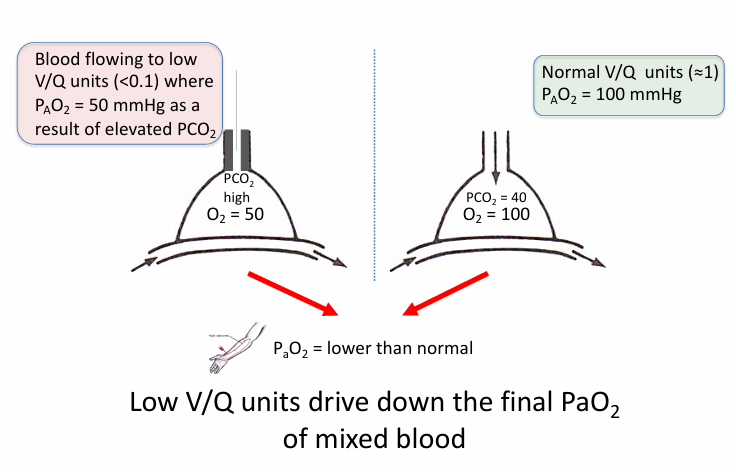
V/Q mismatch and PCO2
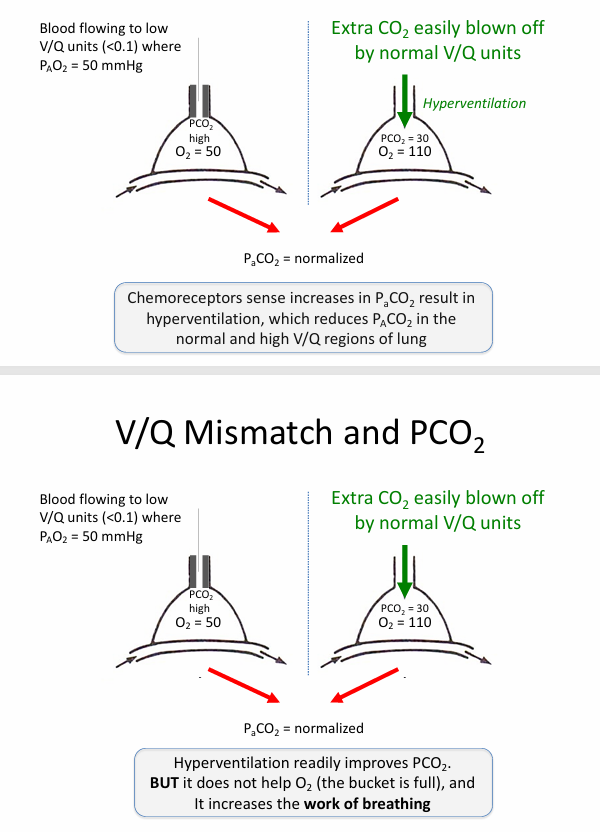
hyperventilation
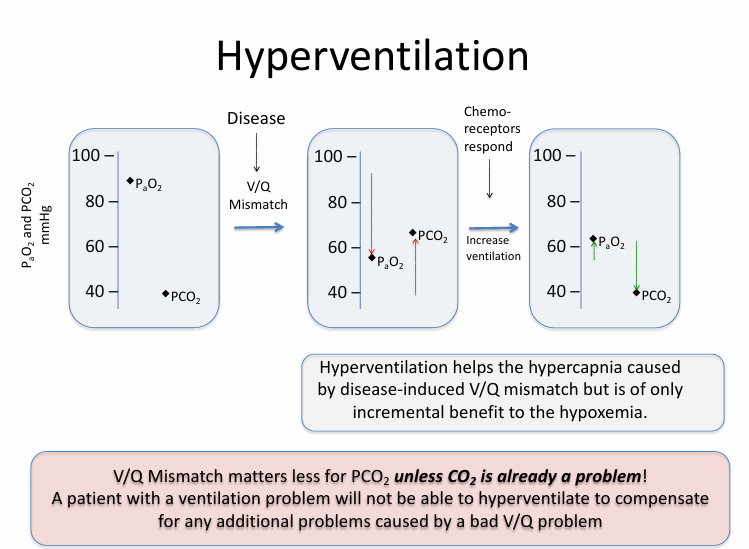
hyperventilation fails in
-severe disease
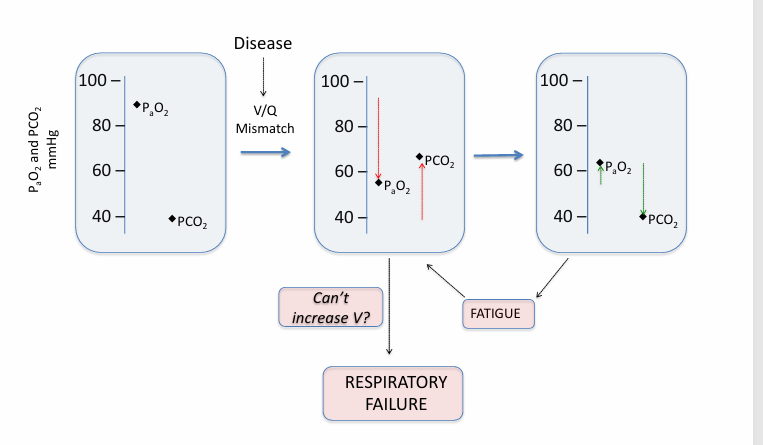
pure hypoventilation v V/Q mismatch
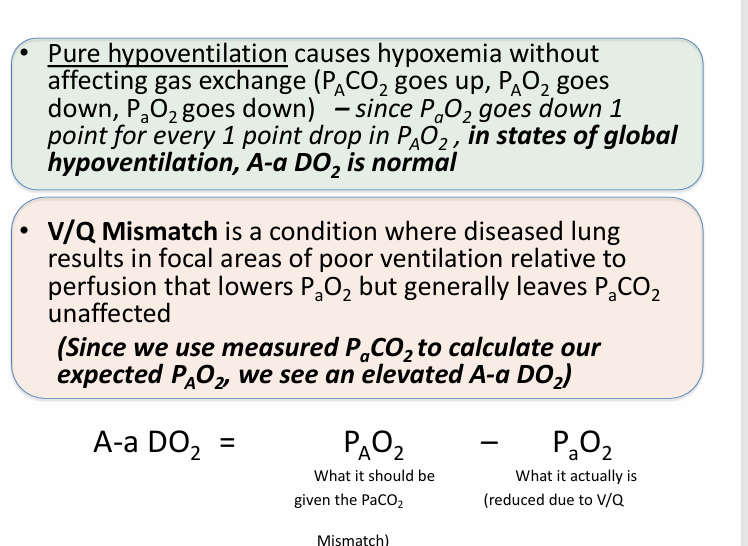
not all V/Q mismatch results in
-hypoxemia
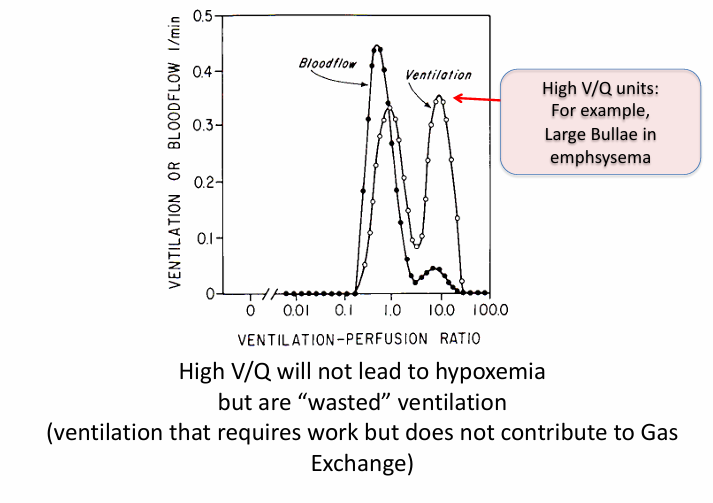
extremes of V/Q mismatch
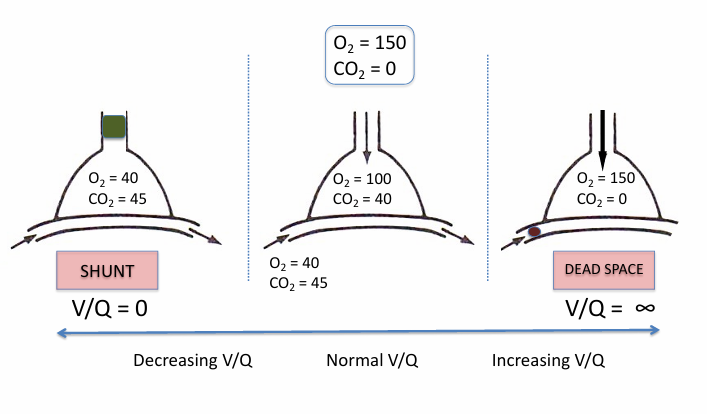
shunt
-an extreme of low V/Q mismatch when V/Q = 0
-shunt: flow of deoxygenated blood that never picks up fresh O2 and is mixed back into the oxygenated blood pool
-shunt can be in heart or lungs
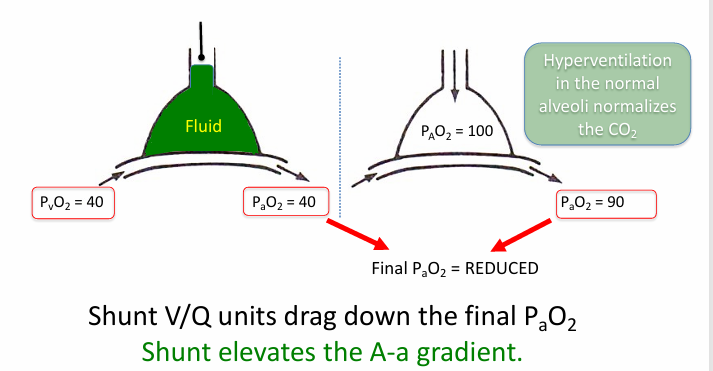
shunt in pneumonia
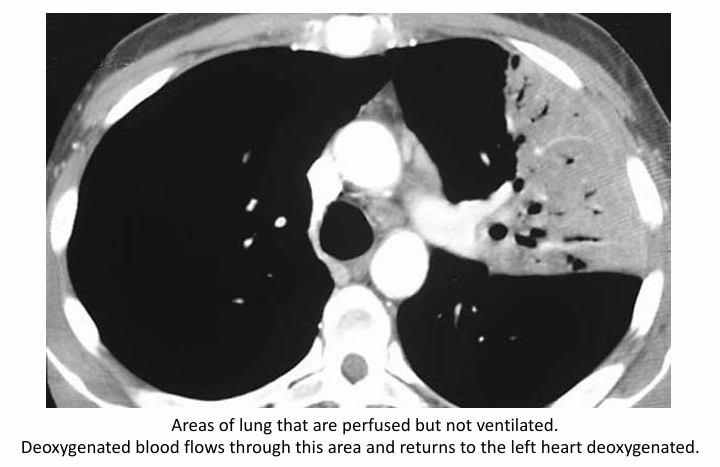
hypoxemic vasoconstriction
-underventilated alveoli have higher PCO2 and therefore lower PAO2; areas of shunt have no O2
-causes a reflex vasoconstriction of the vessels to these alveoli, therefore reducing Q to match the lowered V
-can mitigate the contribution of low V/Q units to the total pool of oxygenated blood
-compensation can be lost in disease states
other causes of hypoxemia- diffusion abnormality
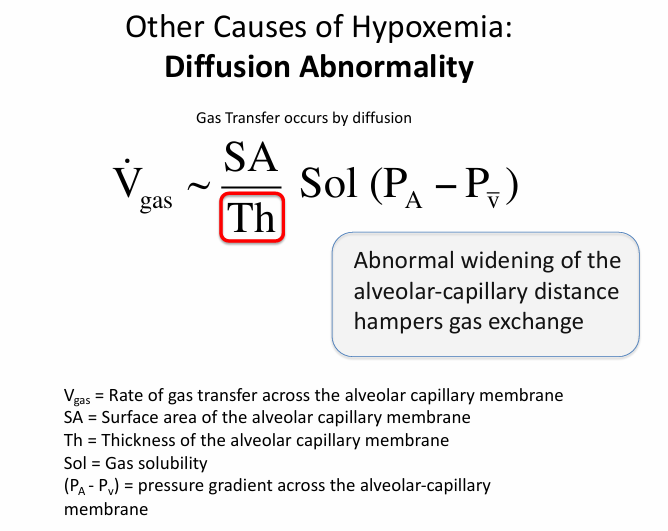
diffusion abnormality
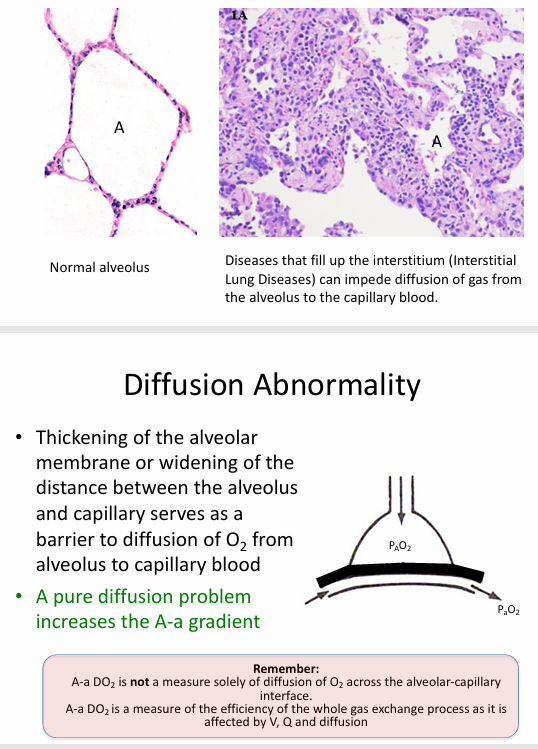
diffusion abnormality causing hypoxemia
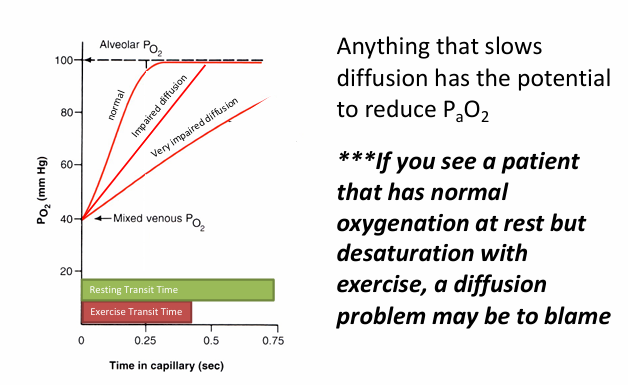
diffusion problem with exercise
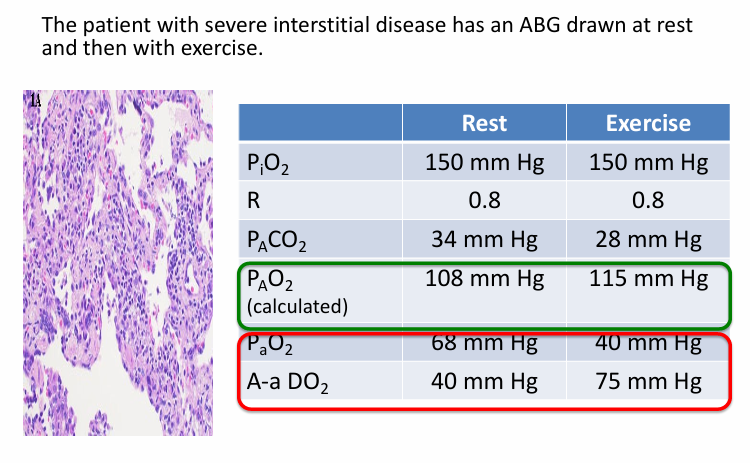
low PiO2 causing hypoxemia
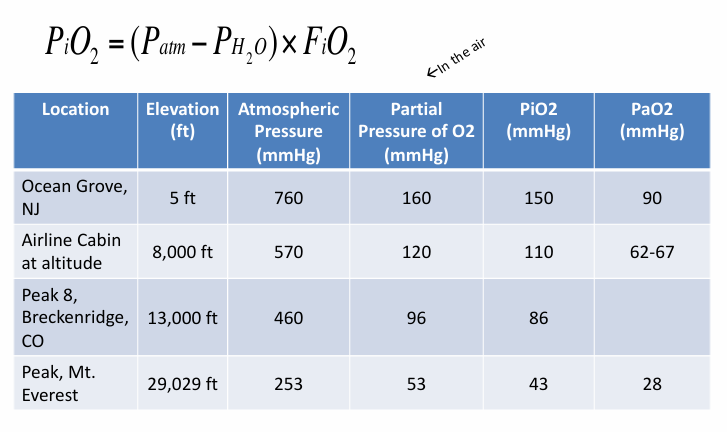
hypoxemia at altitude
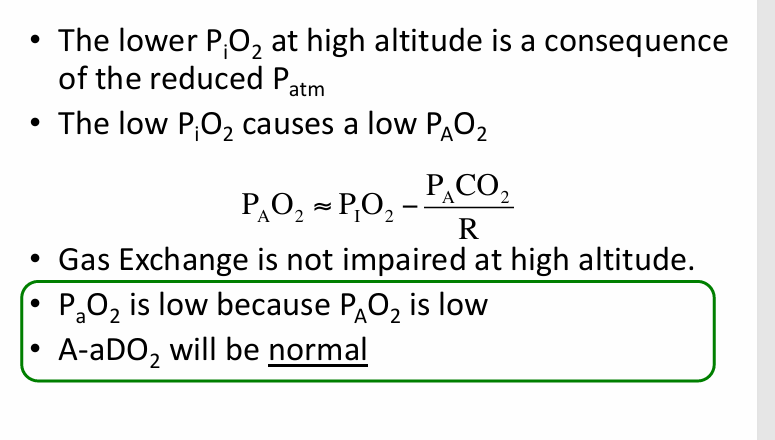
supplemental O2
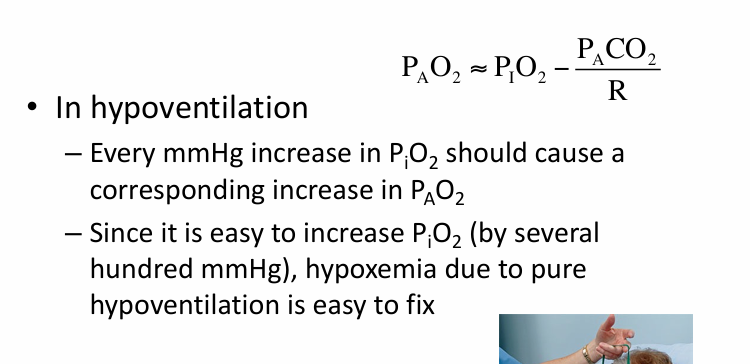
supplemental O2 in V/Q mismatch

supplemental O2 and diffusion abnormality

supplemental O2 in shunt

measuring gas exchange
-A-a gradient
-ratio of PaO2 to FiO2 (“P/F” ratio)
-exercise testing
-diffusing capacity: performed in the PFT lab
5 causes of hypoxemia

A-a gradient- higher than expected
